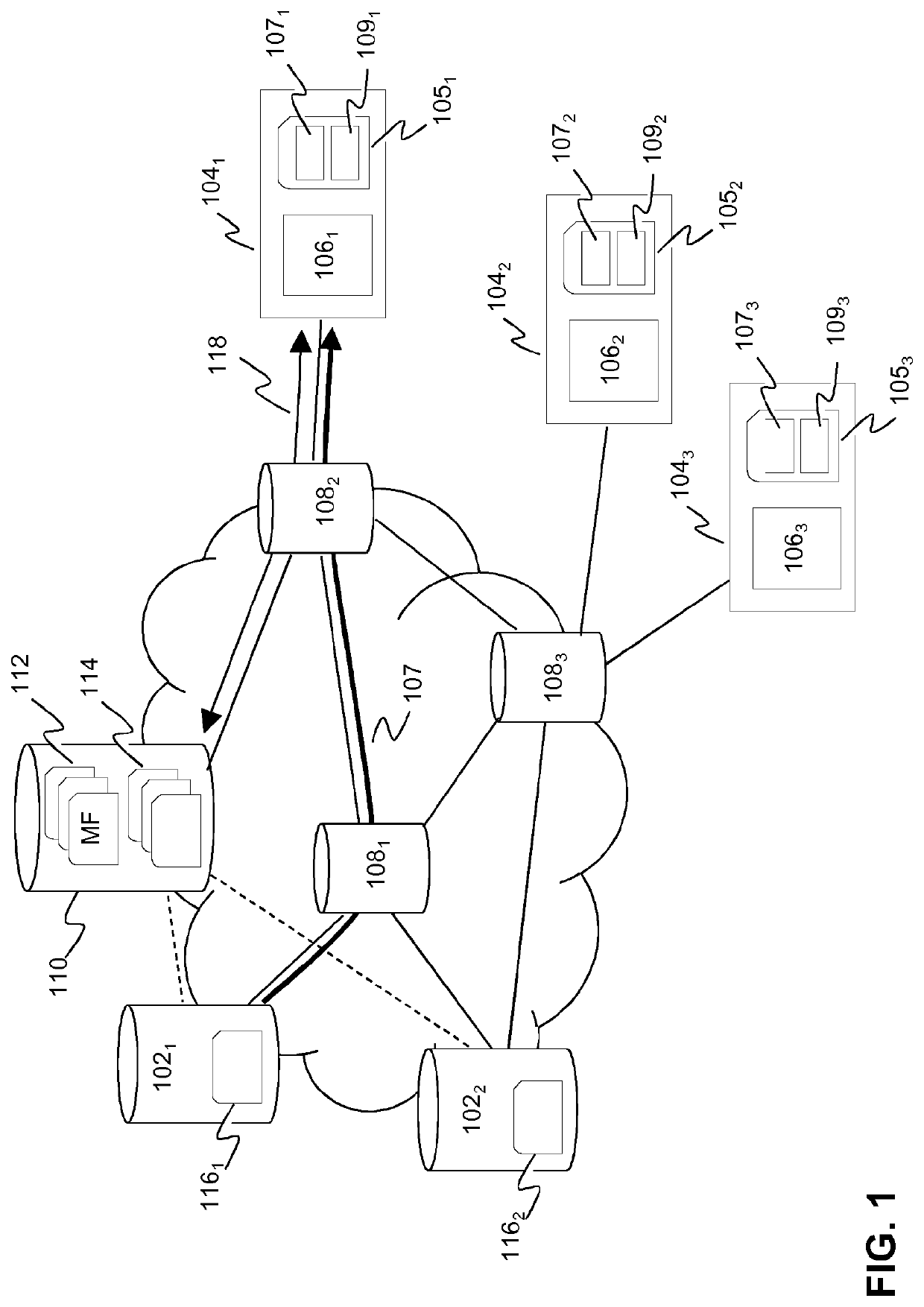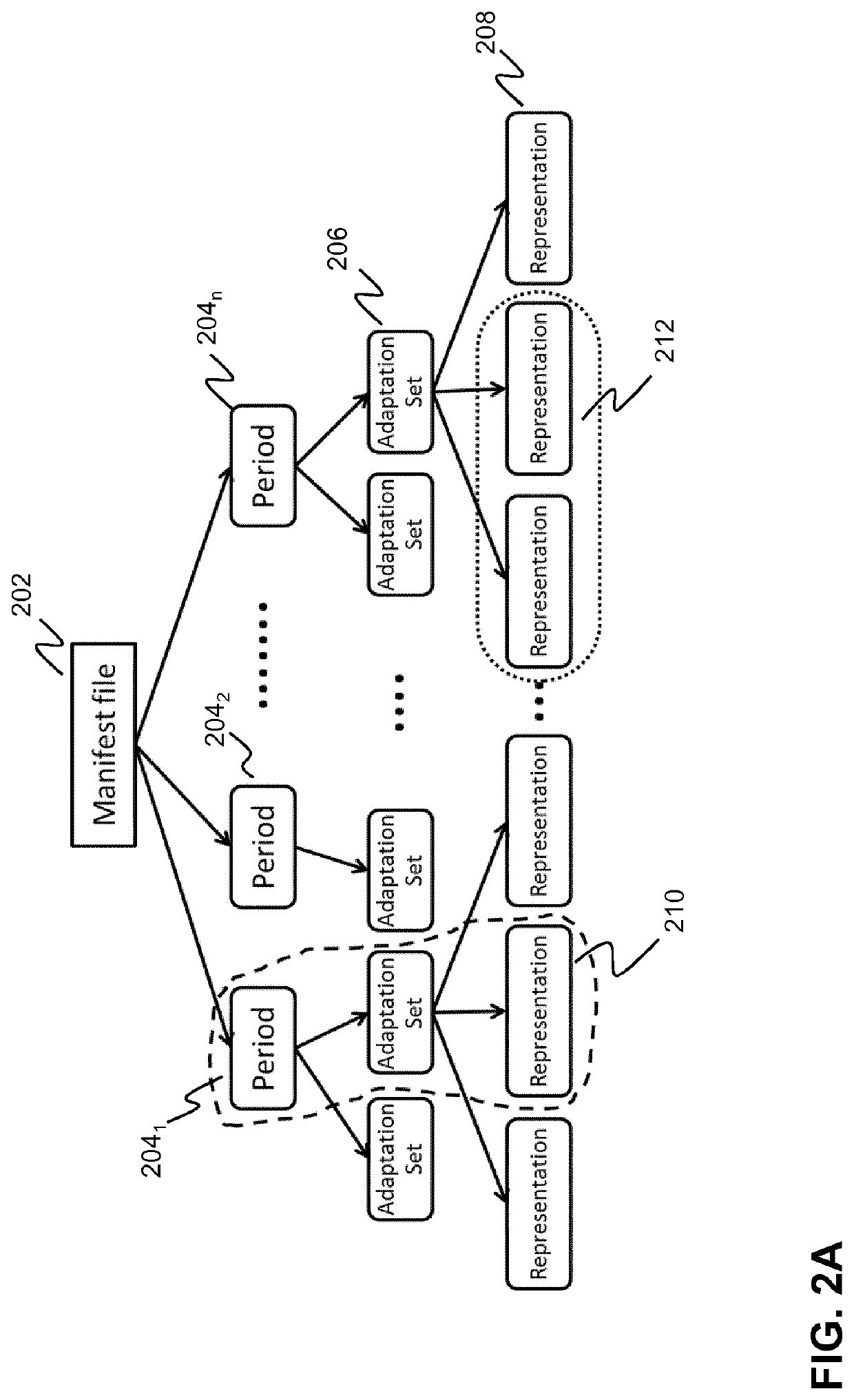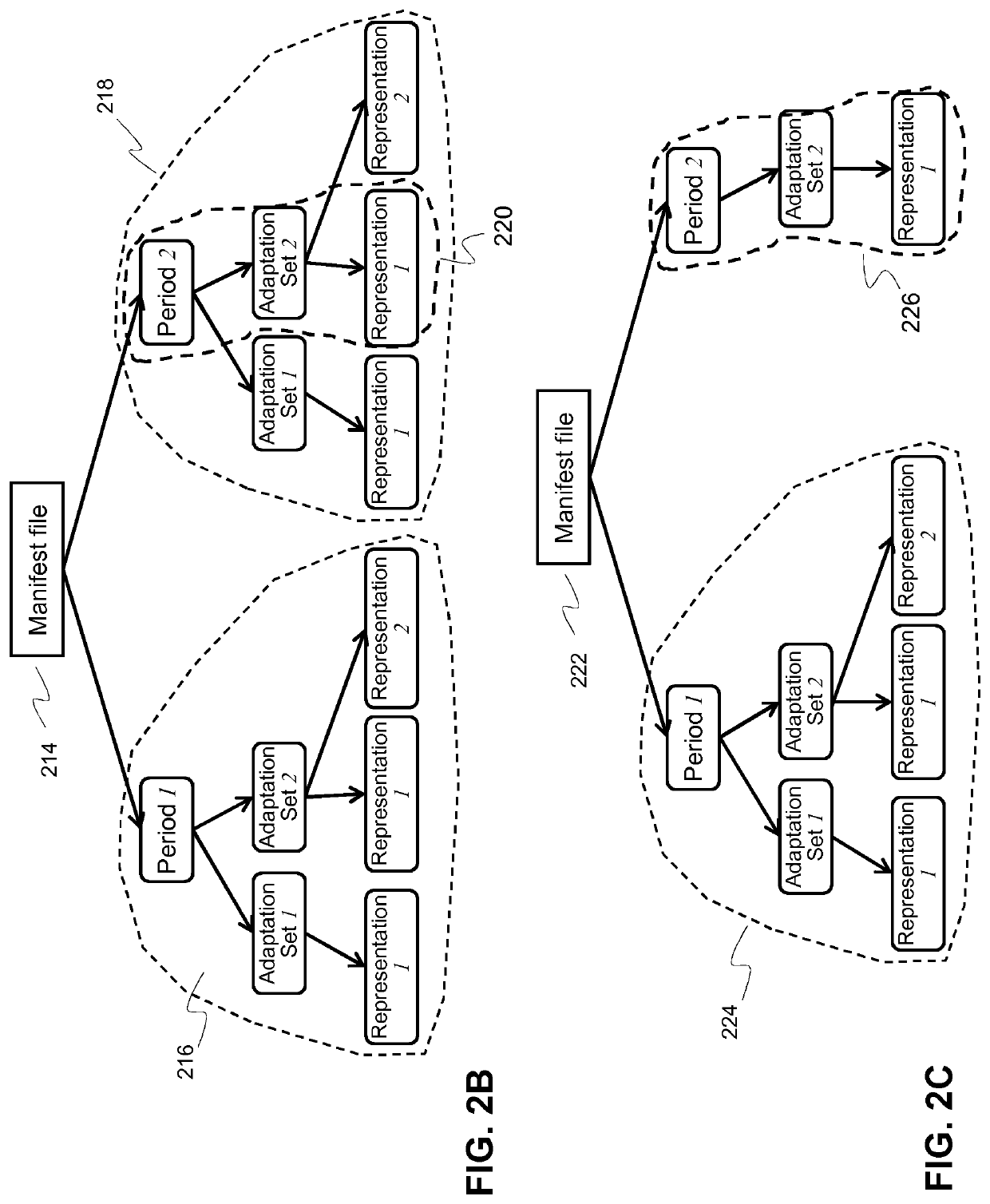Selectively updating a dynamic manifest file
a dynamic and manifest file technology, applied in the field of selective updating of dynamic manifest files, can solve the problems of excessively large content of manifest files, limited data exchange inability to consume only a small subset of information, so as to reduce the amount of information that needs to be exchanged between client apparatuses and manifest file servers, the effect of reducing data processing and buffering
- Summary
- Abstract
- Description
- Claims
- Application Information
AI Technical Summary
Benefits of technology
Problems solved by technology
Method used
Image
Examples
example 1
[0088]MPD stored in the memory of a client apparatus needs to be changed to the address http: / / cdn2.example.com / sample.MPD, a patch may be inserted into one of the segments that is transmitted by the media server to the clients. An MPD that may be updated (either by replacing the full MPD or by replacing one or more parts of an MPD using a patch) may be referred to as a dynamic MPD. As shown in example 1 the MPD comprises an MPD attribute “type=dynamic” for signalling the client apparatus that the MPD is a dynamic MPD. A dynamic MPD may be used for live-streaming or broadcast situations. For example, the dynamic MPD in example 1 is used in a live-streaming session as signalled in the MPD to the client apparatus by the live-streaming attribute profile.
[0089]Using the patch mechanism, the streaming server may inform a client apparatus on an update of the manifest file by including patch information, metadata, in a segment box of a segment transmitted to the client apparatus. A patch m...
example 2
Patch for Updating the Dynamic MPD of Example 1
[0090]When the client apparatus receives the segment containing the event message box, it may parse the segment and determine that it contains a patch and that the patch is to be applied to the current MPD version that is stored in the memory of the client apparatus. To that end, the patch comprises manifest version information that is indicative of the versions of a manifest file (in this example an MPD) to which the patch should be applied to. Here, the MPD the patch refers to is the MPD related to the content where the event message box transporting the patch was included.
[0091]The MPD version may be identified by a time parameter which may be indicative of a wall-clock time associated with the moment the version was made available (“published”) by a network server. For example, the time parameter may be the MPD publishTime attribute known from the MPEG DASH standard. For example, the MPD in the patch of example 2 comprises publish i...
example 3
MPD Updated on the Basis of the Patch of Example 2
[0093]As shown in example 3, the updated MPD has a new version number as indicated by the new publishTime attribute. This attribute was sent in the patch to the client apparatus.
[0094]Hence, from the above it follows that the patch mechanism may be used in order to instruct a client apparatus to update an MPD by including patch information (i.e. metadata) in a segment box which is sent to the client apparatus wherein the patch information comprises a difference (“diff”) between the current MPD and the next version of the MPD and instructions to modify the current manifest file on the basis of the difference. In the MPEG DASH standard, each time the patch is applied to the MPD, the MPD is updated according to the most recent MPD published by the MF server and the MPD version as indicated by the publishTime attribute is changed into the publishTime of the most recently published MPD. This way, the MPD patch mechanism may be used to per...
PUM
 Login to View More
Login to View More Abstract
Description
Claims
Application Information
 Login to View More
Login to View More - R&D
- Intellectual Property
- Life Sciences
- Materials
- Tech Scout
- Unparalleled Data Quality
- Higher Quality Content
- 60% Fewer Hallucinations
Browse by: Latest US Patents, China's latest patents, Technical Efficacy Thesaurus, Application Domain, Technology Topic, Popular Technical Reports.
© 2025 PatSnap. All rights reserved.Legal|Privacy policy|Modern Slavery Act Transparency Statement|Sitemap|About US| Contact US: help@patsnap.com



